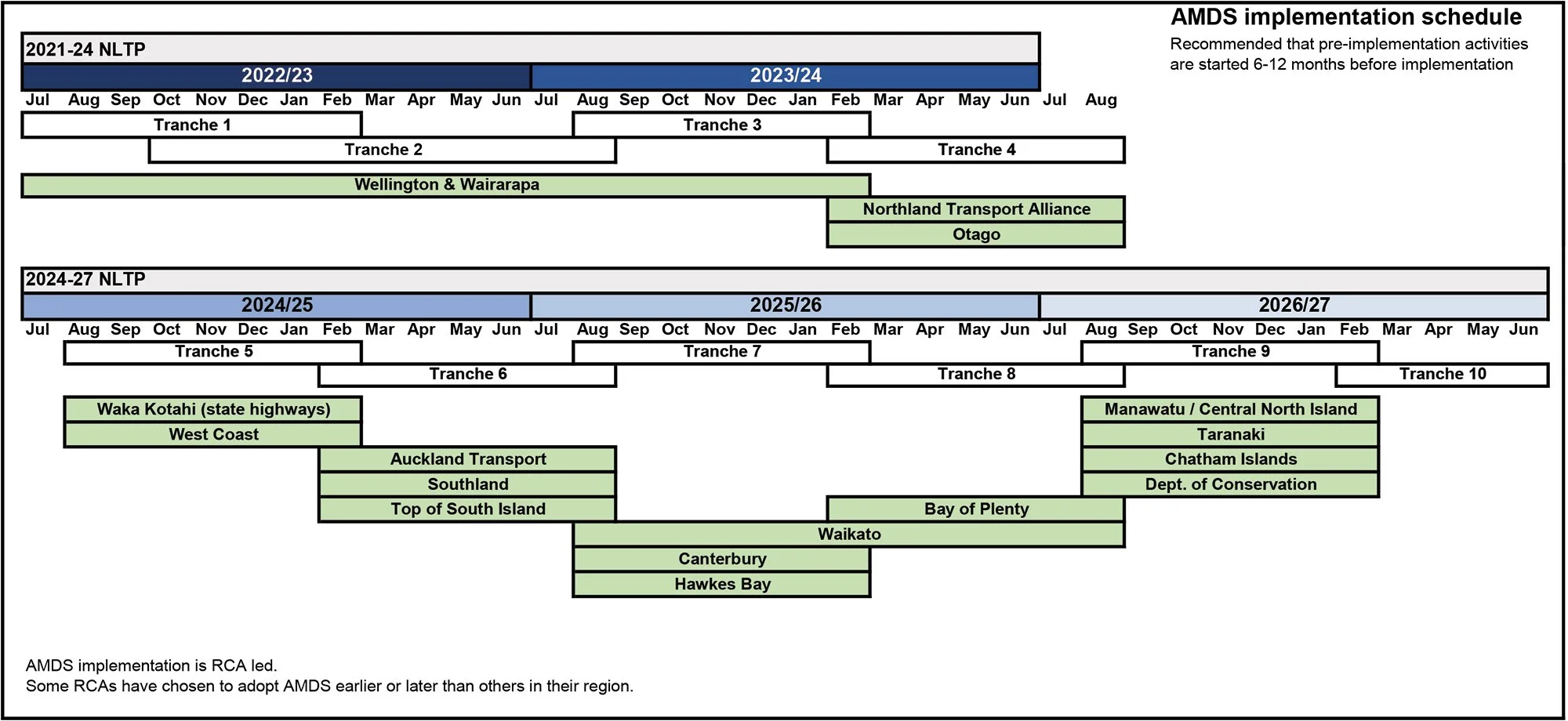AMDS Essentials - Six resources to get you started with the Asset Management Data Standard
If you have been hearing about this Asset Management Data Standard thing, or AMDS for short, and are still trying to figure out what it is all about, this article is for you.
To quote directly from the Waka Kotahi NZ Transport Agency Asset Management Data Standard project page:
"the Asset Management Data Standard (AMDS) is a data standard that informs activity management decisions for transport so we can plan and implement activities which deliver services as expected for the cost expected. It is a common language that describes the service, impact, and asset lifecycle across the transport system."
For New Zealand based readers, if you work with or consume land transport data in some capacity, changes may be on the not-so-distant horizon. Aside from the handful of early adopters who have already AMDSified their data, the AMDS is coming soon to a road-controlling authority near you. The current implementation plan will see all RCAs across Aotearoa-New Zealand adopt the standard by June 2027.
To help implement the standard, the Asset Management Data Standard project page contains a wealth of resources about the AMDS. Everything from high-level overviews of the AMDS project to the granular details of what attributes define each asset included in the standard.
If this all sounds a bit daunting, don't worry - we've got you covered.
In this article, we'll highlight six resources available through the project page to help you quickly understand the AMDS, including; what it is, what it covers, and its importance to the transport sector.
Get ready to get up to speed with the AMDS...
1. Start with why
First things first, it's always a good idea to start with why.
The About the AMDS page provides a good summary of the AMDS and why it is needed. The page also includes a list of sector benefits, identifying things such as cost savings and improved investment decision-making.
A short YouTube video is included (linked below), which you can also check out (it’s just over five minutes long).
2. Assets included in the standard
When reading about the AMDS, you will see the term *land transport assets* frequently mentioned. But what exactly is a land transport asset?
Enter the inventory assets map. This is a convenient one-page overview of the asset class hierarchy covered by the AMDS.
The AMDS asset class hierarchy - based on v1.3 of the standard.
I have referenced and shared this document myself in several different AMDS conversations to date. It's a useful quick reference guide to keep handy, for high-level insights into what's in scope.
3. Dive into the data
For detailed insights and understanding of the standard, you can explore the nuts and bolts of the AMDS on the data standard releases page.
These releases enable you to delve into attribute-level information for each land transport asset type, including data types, descriptions, obligation levels, and units of measure.
Part of the AMDS v1.3 specification for Retaining Wall assets.
At the time of this article, the current version of the standard which has been released is v1.3. You can download the v1.3 inventory assets release here.
4. When it is all happening
As mentioned above, the current implementation plan will see all RCAs around the motu adopt the standard by June 2027. This means a lot of AMDS-related activity will be taking place in the sector over the next few years.
To understand when the AMDS may come your way, check out the Implementation timeframes and activities page to view the broader implementation schedule.
The AMDS implementation timeframe as at January 2024.
You will also get insights into the three stages of the AMDS journey for each RCA, including pre-implementation, implementation and post-implementation.
5. Lessons learned from the early adopters of the AMDS
At the bottom of this page, Waka Kotahi has published an insights document summarising feedback from RCAs that have already implemented the standard.
This provides valuable first-hand intel from the early adopters across areas such as data mapping and triage, training, data migration and testing, stakeholder engagement and more.
AMDS implementation insights for Data migration and testing.
You can download the feedback document available at the time of writing this article here.
6. Stay up to date as the AMDS evolves
Understanding the current state of the AMDS is excellent, but the standard is expected to continue to evolve and develop over time. So staying up to date on all the latest AMDS happenings will also be necessary.
The good news is that Waka Kotahi NZ Transport Agency run frequent online workshops and events to keep you up to date on additions and changes to the AMDS. On this page, you can register for any upcoming scheduled events and view recordings of previous events.
To get an idea on what these are like, here is the November 2023 AMDS Multimodal Network Model quarterly showcase;
And if you want to receive updates via email, you can subcscire to the offical project newsletter here.
So, that's a wrap-up of six resources to get you started on your AMDS journey. With all these official resources available, you will be well-prepared to understand AMDS and what's in store for land transport asset data in Aotearoa New Zealand.




